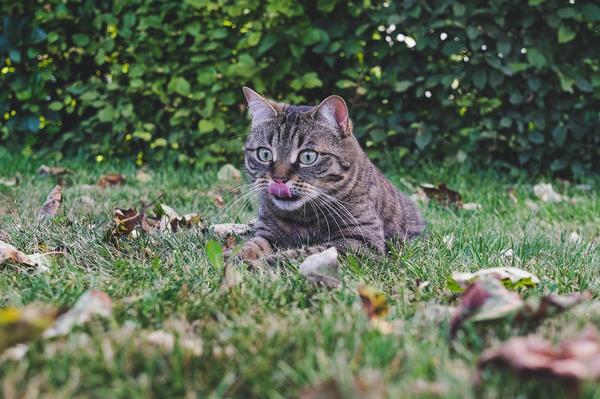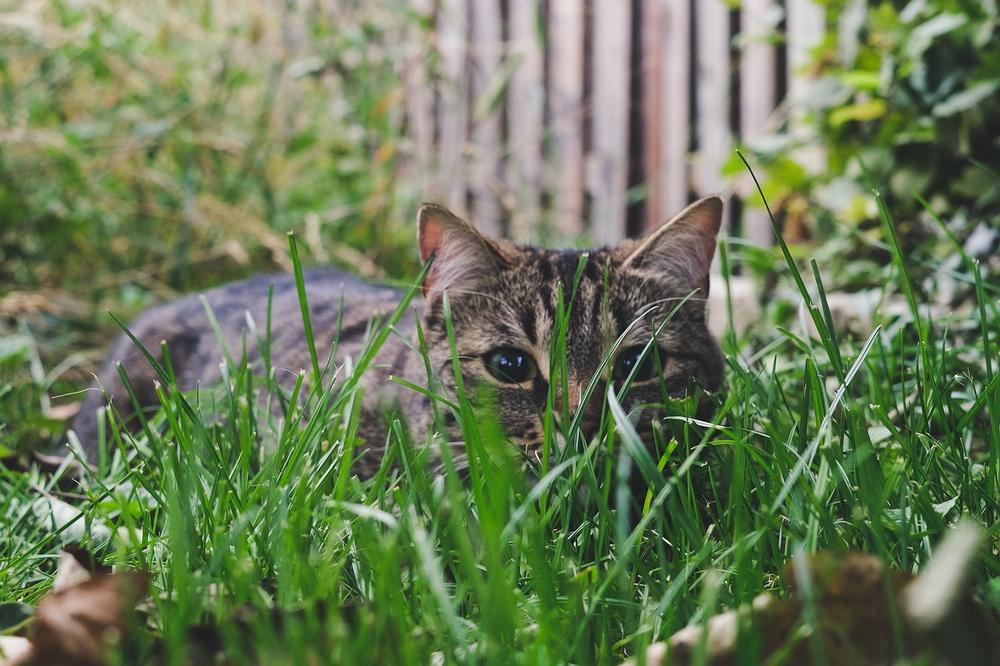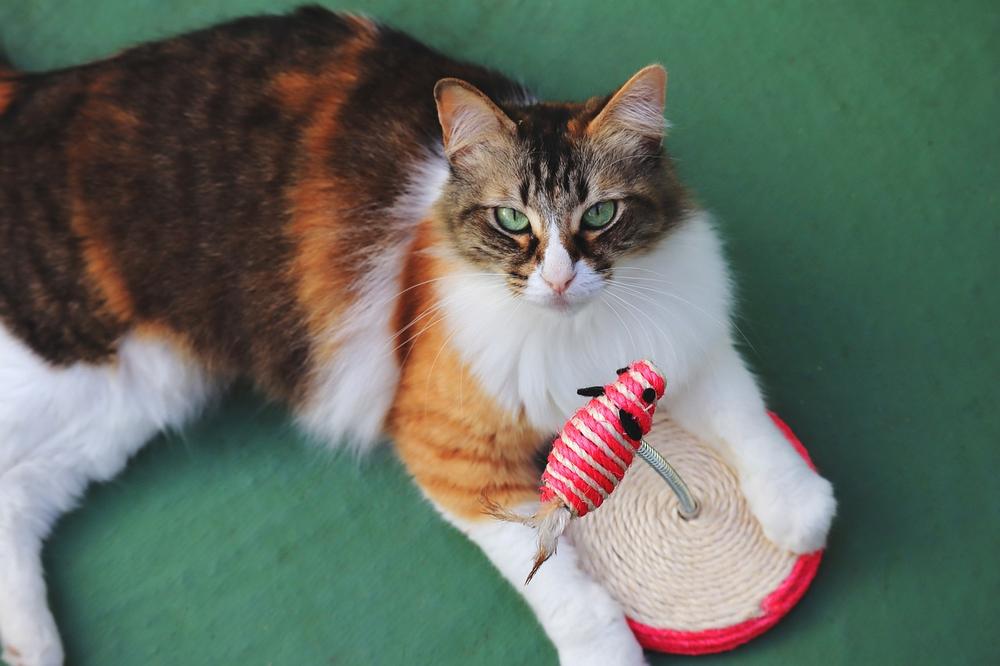Nutritional Needs for Indoor and Outdoor Cats: Complete Guide

Listen up, cat lovers...
Your furry friends are not immune to the dangers lurking indoors and outdoors.
Ignoring their nutritional needs could lead to some serious consequences 😱.
Is it worth jeopardizing their health?
Not on my watch.
In this I Care for Cats guide, I'll reveal the solution you've been searching for.
Let's take action now!
Nutritive Demands and Content of Indoor and Outdoor Cat Food
Indoor cats require fewer calories and less fat in their diet to prevent obesity-related diseases. They need plenty of protein for muscle growth and repair. Opt for cat food with higher fiber content and low-carb options without plant proteins and artificial additives.
Hello cat lovers!
Today, we're going to dive into a topic that might leave you a little perplexed:
The nutritional needs of indoor and outdoor cats.
Believe it or not, these cunning little felines have unique requirements depending on their environment.
But before we get into the nitty-gritty, let's talk about something crucial:
The importance of balanced nutrition for our furry pals.
Just like us humans, cats need proteins, fats, carbohydrates, vitamins, and minerals to keep themselves in tip-top shape.
A well-rounded diet is the secret to ensuring your kitty stays happy and healthy.
Indoor cats, those lazy loungers who spend their days inside, have lower energy needs than their adventurous outdoor counterparts.
So, they require fewer calories and less fat in their diet to prevent any obesity-related diseases.
However, don't be fooled by their relaxed demeanor — indoor cats still need plenty of protein to support muscle growth and repair.
To meet the specific needs of indoor cats, choose cat food designed specifically for them, with higher fiber content.
This aids digestion and reduces the pesky issue of hairballs (let's face it, nobody enjoys cleaning those up!). Opt for low-carb options without plant proteins and artificial additives.
Dry cat food can work wonders, but you can also treat them to wet food for added hydration and protein goodness.
On the flip side, outdoor cats are true adventurers, burning calories like there's no tomorrow.
Outdoor cat food is specially formulated to prevent weight gain, boasting high calorie content and protein levels.
However, be cautious, as it may contain extra fat and unnecessary vitamins and minerals, making it unsuitable for indoor cats.
So, when shopping for cat grub, be mindful of your little buddy's lifestyle and select a brand that caters to their needs.
Take a look at the nutrient percentages and ensure you're dealing with reputable brands that use top-notch ingredients.
Well, folks, there you have it — a crash course on indoor and outdoor cat nutrition. Always prioritize meeting your little hunters' needs, whether they're content at home or exploring the great outdoors.
Main points I'll expand upon further down this article:
- The decision to have an indoor or outdoor cat depends on the owner's preference.
- Indoor cats should still be given opportunities for hunting and searching for food.
- Outdoor cats need more energy, higher calorie, and fat content in their diet.
- Outdoor cats may require additional supplements to support their immune system.
- Outdoor cats require more protein, fat, and additional supplements overall.
- Feed indoor cats a balanced diet that meets their specific requirements.
- Select indoor cat food formulas that cater specifically to their lifestyle.
- Feeding outdoor cats with indoor-formulated cat food can minimize health risks.
- Transition outdoor cats to an indoor diet gradually over a few days.
- Provide mental stimulation and toys for indoor cats to prevent obesity.
But what about the in essence nutrition requirements for indoor and outdoor cats?
Are higher protein levels really that crucial for their wellbeing?
Let's dive deeper into these questions to ensure you're providing the best diet for your feline friends!
Understanding the Unique Nutritional Requirements of Outdoor Cats
Outdoor cats need protein to keep up with their active lifestyles and recover from muscle strain. Give them cat food with higher protein content to maintain their strength.
But let's not forget indoor cats!
Even though they don't roam and chase birds, they still have instincts...
Indoor cats need chances to hunt and search for food, so try interactive toys or scattering meals around the house. 🐾
This will meet their natural needs.
Now, outdoor cats take it to the next level.
With all that hunting and physical activity, they need loads of energy.

That's why their diet should have more calories, fat, and protein to fuel their outdoor adventures.
Plus, outdoor cats deal with pollutants.
To boost their immune system, add supplements to their diet.
So, whether your cat stays inside or ventures out, ensure you feed them a balanced diet specific to their requirements.
Because every cat deserves optimal nutrition.
Now that we've explored the nutritional needs of outdoor cats, let's turn our attention to indoor cats.
But what makes indoor cat food so special?
How can it address their unique health concerns and ensure a happy and healthy life?
Let me tell you all about it!
Should You Look for Indoor Cat Food as a Separate Product?
Yes, it is recommended to search for indoor cat food as a separate product. Indoor cats have different needs and are more prone to health issues. Specially formulated indoor cat food provides essential nutrients to prevent hairballs and maintain a healthy urinary tract, promoting overall well-being.
Indoor cats have their own set of needs, and using indoor cat food can really make a difference for them.
Listen up:
What you choose to feed your indoor feline companion has a direct impact on their overall health and lifespan.
Opting for indoor cat food is the smart move, my friend.
Trust me.
Compared to outdoor cats, indoor cats tend to have a more low-key lifestyle. This means they're more prone to certain health issues.
But don't worry:
By selecting indoor cat food that's specially formulated, you can tackle these concerns head-on.
You want to avoid those pesky hairballs?
No longer will you find yourself spending hours on the couch, diligently removing those disgusting hairballs from your beautiful cushions...
Let me tell you:
These specifically designed options for indoor cats deliver exactly what your furry buddy needs to enjoy a longer and healthier life.
How does it work?
Well, indoor cat food is packed with all the essential nutrients that are crucial for the well-being of indoor cats.
With the right formula, your adorable ball of fur will be able to ward off troublesome hairballs and maintain a healthy urinary tract.
Top-quality indoor cat food ensures that your beloved indoor buddy stays content and in good health.
Give it a shot, and witness the positive transformation yourself!
But what about outdoor cats?
Is it beneficial for them to also eat indoor cat food?
Let's explore the potential advantages and considerations...
Benefits of Feeding Outdoor Cats Indoor Cat Food
| Nutritional Needs | Indoor Cats | Outdoor Cats |
|---|---|---|
| Protein | Indoor cat food contains high-quality proteins that support muscle development and maintenance. | Outdoor cats require protein-rich diets to replenish energy levels and support their active lifestyle. |
| Fat | Indoor cat food provides appropriate levels of fat to maintain a healthy weight and support skin and coat health. | Outdoor cats need higher levels of fat to sustain their energy levels and provide insulation against the elements. |
| Fiber | Indoor cat food typically contains higher fiber content to promote healthy digestion and prevent hairballs. | Outdoor cats may require less fiber in their diet as they have access to natural sources of roughage while hunting and foraging. |
| Vitamins/Minerals | Indoor cat food is formulated to provide optimal levels of essential vitamins and minerals, such as taurine for heart health. | Outdoor cats may benefit from additional supplementation of certain vitamins and minerals, depending on their specific needs and environmental factors. |
| Water | Indoor cats may require less water as their environment is controlled and they have access to fresh water sources. | Outdoor cats need constant access to fresh water to stay hydrated, especially during hot weather or when hunting. |
| Antioxidants | Indoor cat food may contain antioxidants to support overall immune health and protect against environmental stresses. | Outdoor cats may benefit from additional antioxidants to counteract the effects of exposure to pollutants and pathogens. |
Feeding indoor cat food to outdoor cats can bring about significant advantages. When you provide them with food specifically formulated for indoor cats, you greatly minimize the risk of parasites, infectious diseases, and intestinal issues that are commonly associated with outdoor environments.
Trust me, this is a big deal.
You see, keeping your cats indoors not only reduces their boredom and stress levels but also presents unique challenges.
Their sedentary lifestyle can contribute to pesky hairballs and painful urinary tract problems.
Ouch!
That's definitely something we want to avoid.
Thankfully, there's a solution:
Specialized indoor cat food. This type of food is packed with essential vitamins, minerals, and probiotics that strengthen their digestive system. It's good stuff!
But wait, there's more…
For indoor cats, regular exercise is crucial.

It not only provides them with mental stimulation but also keeps them physically fit and healthy. Playtime is absolutely essential, so no lazy cats allowed!
Now, before you start emptying bags of indoor cat food into every outdoor cat's bowl, remember one thing:
Moderation is key.
Feeding too much can cause weight gain and obesity in outdoor cats, which can lead to a host of other health issues.
So, please keep this in mind:
Indoor cat food is fantastic for outdoor cats, as long as you balance it out with consistent exercise and mindful portion control.
By doing so, you'll be ensuring the overall well-being of your feline friends.
And trust me, your cats will thank you for it!
And if you're wondering about a particular treat, like Oreos, I have you covered.
You might be curious to know if cats can eat Oreos and what possible risks it poses.
That's why I wrote Can Cats Eat Oreos, to address any concerns you may have.
I highly recommend checking it out to understand the potential risks associated with feeding Oreos to your feline friends.
How to Transition Your Cat's Diet from Indoor to Outdoor (or vice versa)
Transitioning your cat from indoor to outdoor or vice versa requires a step-by-step guide so that you don't stress or deprive your feline friend.
Take it slow and introduce the new diet gradually over a few days.

This way, you ease the transition and prevent any negative effects on your cat's well-being.
Reducing the potential for stress is crucial, as is ensuring that your cat gets the necessary nutrition during this process.
By following this approach, you provide a smooth journey for your precious companion.
Tips for Feeding Your Cat Properly
Properly feeding your cat is essential for their health and happiness.

Here are some tips to ensure you're doing it right:
- Consider their life stage: Kittens, adult cats, and senior cats have different nutritional needs. Choose food specifically formulated for their age.
- Address dietary needs: Some cats require special diets due to allergies or medical conditions. Consult with your veterinarian to determine the best options.
- Prevent obesity: Measure your cat's portions to avoid overfeeding. Follow feeding guidelines provided by the manufacturer based on your cat's weight and activity level.
- Provide mental stimulation: Engage your indoor cat with toys, puzzles, and interactive feeders to keep them mentally stimulated and prevent overeating out of boredom.
- Access to fresh water: Ensure your cat always has access to clean, fresh water to prevent dehydration and kidney issues.
- Avoid table scraps: Human food can be harmful to cats, leading to digestive problems and nutritional imbalances. Stick to a balanced feline diet.
- Dental health matters: Incorporate dental treats and regular dental check-ups to maintain your cat's oral hygiene.
- Seek professional help: If you're unsure about proper feeding or notice any unusual behaviors, consult with a veterinarian who can provide personalized guidance.
Follow these tips to keep your indoor cat healthy and happy! 😀
And that wraps up today's article.
You made it to the end of my blog post! Can I ask you if you enjoyed reading it? I put so much time and effort into crafting informative and thorough blog posts. It's a task that I genuinely enjoy, but it does take up quite a bit of my time. So, if you wouldn't mind, I would be extremely grateful if you could click on any of the social sharing icons to spread the word about this blog post with others. Thank you so much!
Talk soon,
-Sarah Davis